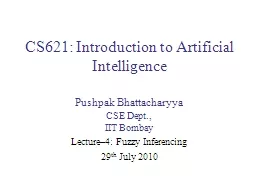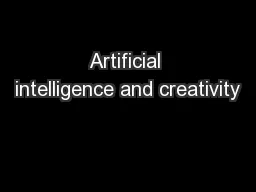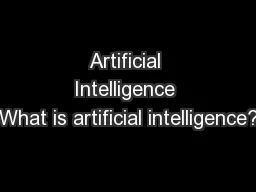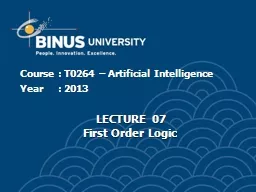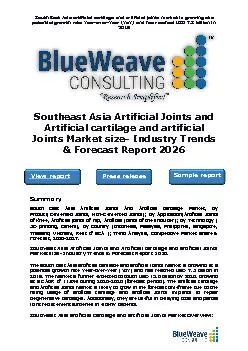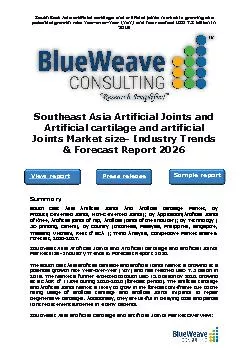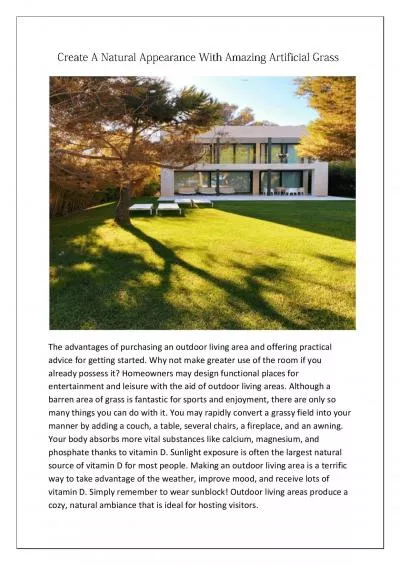PPT-CS621: Introduction to Artificial Intelligence
Author : lois-ondreau | Published Date : 2016-03-12
Pushpak Bhattacharyya CSE Dept IIT Bombay Lecture4 Fuzzy Inferencing 29 th July 2010 Meaning of fuzzy subset Suppose following classical set theory we say if
Presentation Embed Code
Download Presentation
Download Presentation The PPT/PDF document "CS621: Introduction to Artificial Intell..." is the property of its rightful owner. Permission is granted to download and print the materials on this website for personal, non-commercial use only, and to display it on your personal computer provided you do not modify the materials and that you retain all copyright notices contained in the materials. By downloading content from our website, you accept the terms of this agreement.
CS621: Introduction to Artificial Intelligence: Transcript
Download Rules Of Document
"CS621: Introduction to Artificial Intelligence"The content belongs to its owner. You may download and print it for personal use, without modification, and keep all copyright notices. By downloading, you agree to these terms.
Related Documents

